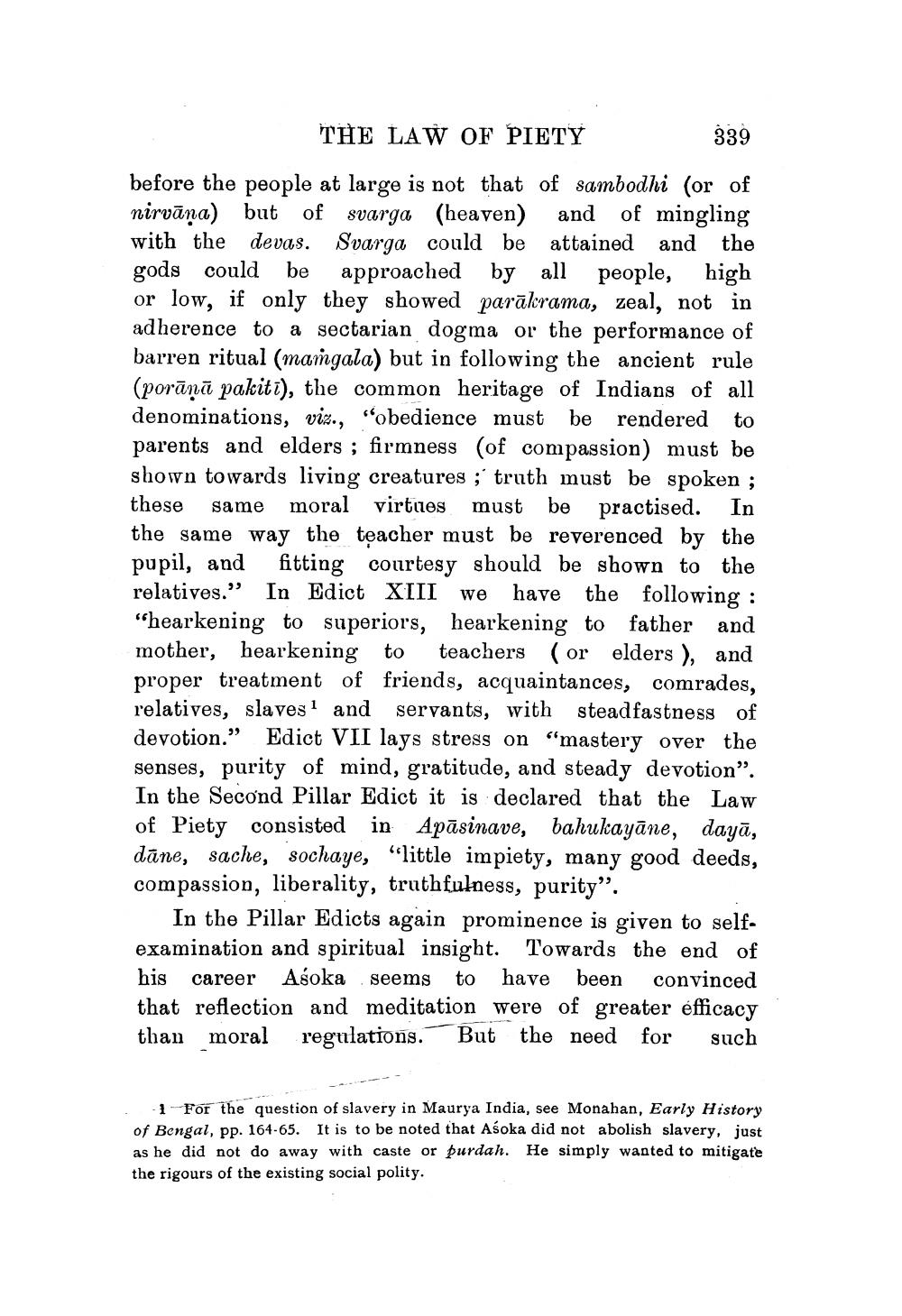________________
THE LAW OF PIETY
339 before the people at large is not that of sambodhi (or of nirvāṇa) but of svarga (heaven) and of mingling with the devas. Svarga could be attained and the gods could be approached by all people, high or low, if only they showed parākrama, zeal, not in adherence to a sectarian dogma or the performance of barren ritual (mamgala) but in following the ancient rule (porāņā pakiti), the common heritage of Indians of all denominations, viz., "obedience must be rendered to parents and elders ; firmness (of compassion) must be shown towards living creatures ; truth must be spoken ; these same moral virtues must be practised. In the same way the teacher must be reverenced by the pupil, and fitting courtesy should be shown to the relatives.” In Edict XIII we have the following: "hearkening to superiors, hearkening to father and mother, hearkening to teachers (or elders ), and proper treatment of friends, acquaintances, comrades, relatives, slaves and servants, with steadfastness of devotion.” Edict VII lays stress on "mastery over the senses, purity of mind, gratitude, and steady devotion”. In the Second Pillar Edict it is declared that the Law of Piety consisted in Apāsinave, bahukayāne, dayā, dāne, sache, sochaye, "little impiety, many good deeds, compassion, liberality, truthfulness, purity”.
In the Pillar Edicts again prominence is given to selfexamination and spiritual insight. Towards the end of his career Asoka seems to have been convinced that reflection and meditation were of greater efficacy than moral regulations. But the need for such
1 For the question of slavery in Maurya India, see Monahan, Early History of Bengal, pp. 164-65. It is to be noted that Asoka did not abolish slavery, just as he did not do away with caste or purdah. He simply wanted to mitigate the rigours of the existing social polity.




